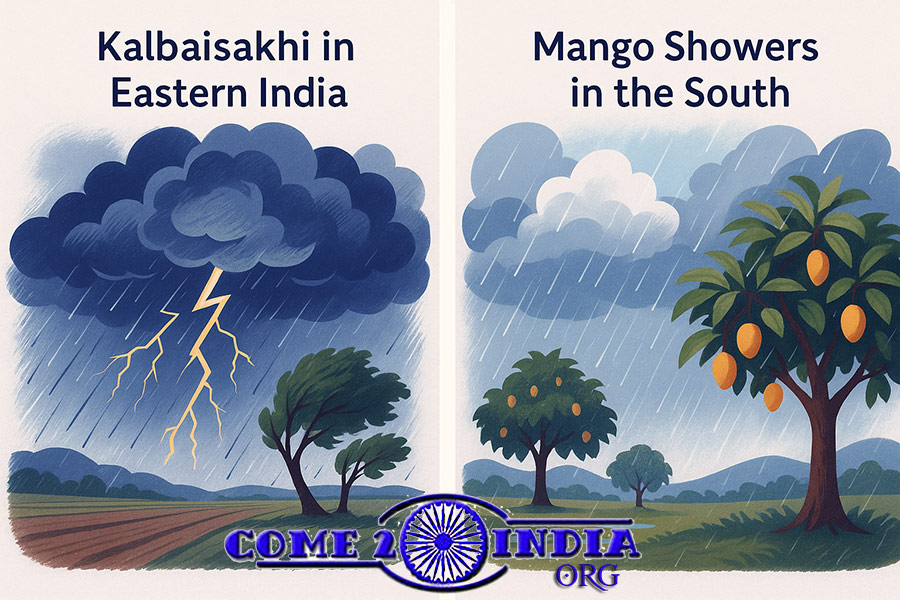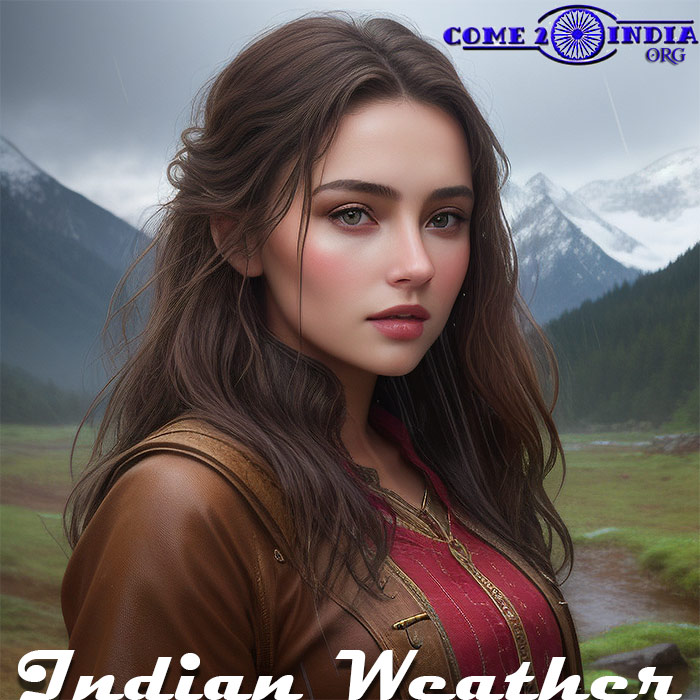We invite you to explore India - the Land with infinite beauty ! Whether you soar high into Himalayas or peer under the ruins of the Ancient monuments dotting the landscape of India, you will cherish the experience long after your visit ! This India Travel Guide on Indian Weather Pattern is free from any commercial interest! This site is dedicated to promote India - the vast subcontinent, its glorious past, magnificent landscape and its infinite variety.

Indian weather
Overview of Indian Weather Patterns
India the subcontinent has a complex weather pattern. They say when it rains it results in a flood. If there is no rain, then it results in severe drought. There is no moderate climate in India for ages. Generally most of India has 3 climate conditions – Hot, Hotter and Hottest.
India experiences a diverse and complex climate system, shaped by its vast topography, latitude, and the influence of both the Himalayas and the Indian Ocean. The country falls under the tropical monsoon climate according to the Köppen climate classification, but it also encompasses arid deserts, alpine tundras, humid coastlines, and subtropical zones.
Major Seasons in India
India typically experiences four distinct seasons as defined by the India Meteorological Department (IMD):
Winter (January – February)
Northern India can witness sub-zero temperatures, especially in the Himalayan region (e.g., Leh, Shimla).
Plains like Delhi, Punjab, and Uttar Pradesh experience cool days and cold nights.
Southern India remains relatively mild due to its proximity to the equator.
Pre-Monsoon / Summer (March – May)
Characterized by rising temperatures; May is often the hottest month.
The Thar Desert and central India experience extreme heat, with temperatures often exceeding 45°C (113°F).
This period also sees localized thunderstorms, known as Kalbaisakhi in eastern India and Mango Showers in the south.
Monsoon (June – September)
Driven by the southwest monsoon winds, this season brings over 70% of India’s annual rainfall.
Coastal and Western Ghats regions (e.g., Kerala, Mumbai) experience intense rainfall.
Rainfall distribution varies significantly; Cherrapunji and Mawsynram in Meghalaya are among the wettest places on Earth.
Post-Monsoon / Retreating Monsoon (October – December)
The monsoon withdraws, leading to clearer skies and declining humidity.
Northeast monsoon affects the southeastern coast, especially Tamil Nadu and Andhra Pradesh, contributing significantly to annual rainfall there.
Key Influences on Indian Weather
The Himalayas act as a climatic barrier, blocking cold Central Asian winds and influencing rainfall distribution.
The Indian Ocean, Bay of Bengal, and Arabian Sea moderate coastal climates and are key players in monsoon dynamics.
El Niño-Southern Oscillation (ENSO): Affects monsoon strength; El Niño often correlates with weaker monsoons and drought.
Western Disturbances: These are extratropical storms from the Mediterranean region, crucial for winter rain and snow in northwestern India.
Climate Zones
India encompasses six major climatic regions:
Arid and Semi-arid (Rajasthan, Gujarat)
Humid Subtropical (Northern Plains)
Tropical Wet (Western Coast, Northeast)
Tropical Dry (Interior Peninsular India)
Mountain Climate (Himalayas)
Coastal Climate (East and West Coasts)
Climate Change and Indian Weather
Rising temperatures and increased frequency of extreme weather events (like cyclones and heatwaves) are becoming more pronounced.
Shifts in monsoon timing and intensity are affecting agriculture and water security.
Coastal areas are particularly vulnerable to sea-level rise and cyclonic activity.
Kalbaisakhi (Nor'westers)
Region: Eastern and Northeastern India
Especially prevalent in West Bengal, Odisha, Assam, Jharkhand, and Bihar
Time of Occurrence:
Late March to May (Pre-monsoon season)
Description:
Kalbaisakhi, also known as Nor'westers, are sudden and violent thunderstorms that develop during the late afternoons or evenings.
Kalbaisakhi (also spelled as Kolbousaki or Kalbisakhi) is a unique weather phenomenon that's characteristic of certain regions in South Asia, particularly Bangladesh and parts of India. The term "Kalbaisakhi" literally means "the time when the winds change."
In essence, Kalbaisakhi weather refers to a brief period of intense heat and humidity, usually around late spring or early summer.
1. Scorching temperatures: Daytime temperatures can soar up to 40°C (104°F) or even higher, making it feel like an oven.
2. High humidity: The air is extremely humid, often reaching levels above 80%. This creates a sticky, heavy atmosphere that's hard to tolerate.
3. Gusts of wind: As the name suggests, Kalbaisakhi is characterized by sudden, strong gusts of wind that can be quite uncomfortable. These winds are often accompanied by dust and sandstorms.
4. Short-lived: The entire experience of Kalbaisakhi weather typically lasts only a few hours or days.
The term "Kalbaisakhi" is often used to describe this specific weather pattern, which is considered unpleasant but also exciting in its own way. It's like the weather equivalent of a thrilling rollercoaster ride – intense, brief, and memorable!
Key Characteristics:
The name Kalbaisakhi literally means "Calamity of the month of Baisakh" (April-May in the Bengali calendar).
Caused by the intense heating of land, leading to localized low-pressure systems.
Winds often blow from the northwest—hence the name Nor'wester.
Brings gusty winds, heavy rain, lightning, and sometimes hail.
Duration is usually short, but intensity can be very high.
Importance:
Provides temporary relief from the heat.
Beneficial for jute and rice cultivation.
Can also be destructive—damaging crops, power lines, and property.
Mango Showers
Region: Southern India
Notably in Kerala, Karnataka, and parts of Tamil Nadu and Andhra Pradesh
Time of Occurrence:
Late March to early May
Description:
Mango Showers are pre-monsoon showers that occur irregularly during the peak summer months.
Key Characteristics:
Caused by the convectional lifting of moist air from the Indian Ocean.
Usually light to moderate rain, often accompanied by thunder.
Called Mango Showers because they help ripen mangoes, which are a major summer crop.
Importance:
Helps cool the atmosphere temporarily.
Vital for mango and coffee plantations, especially in Karnataka and Kerala.
Acts as a precursor to the southwest monsoon.

| Feature | Kalbaisakhi | Mango Showers |
|---|---|---|
| Region | Eastern and Northeastern India | Southern India |
| Time | April–May | March–May |
| Nature | Violent thunderstorms | Light to moderate showers |
| Cause | Localized heat + moisture | Oceanic moisture + convection |
| Impact | Beneficial but sometimes destructive | Aids mango and coffee cultivation |

